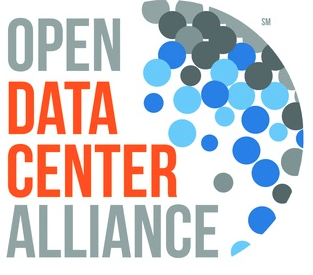Open Datacenter Group Issues Cloud Guidelines

The Open Data Center Alliance has issued a "usage model" that approaches cloud infrastructure from the demand rather than the supply side.
The initial version of the cloud infrastructure usage model is intended to "help guide enterprise IT consumers in their cloud service acquisition decisions and increase the standardization of cloud service consumption," the group said in releasing the guidelines.
The usage model also defines how compute, network and storage resources are aggregated to form cloud infrastructure as well as how they can be holistically consumed and managed, the Alliance said.
With the growing shift toward a hybrid cloud infrastructure, the group noted that it increasingly makes sense to configure a private, on-premises cloud as closely as possible to the public cloud. "Keeping the technical design of the on- and off-premises infrastructures consistent," the Alliance said, "makes it easier to aggregate and orchestrate resources across a hybrid cloud."
The usage model also walks through several usage scenarios for an aggregated infrastructure-as-a-service deployment, noting that the lines between IaaS, software- and platform-as-a-service are blurring. One reason is the recent introduction of the "IaaS+" concept that adds modular services on top of infrastructure services.
The first scenario focuses on deploying an enterprise production application to a cloud infrastructure. The second covers deployment of an enterprise archiving platform to the cloud.
The usage framework also highlights the growing number of open source efforts that are driving cloud and datacenter innovation. Among them are the OpenStack operating system, the CloudFoundry multi-language public cloud applications platform and Docker software applications containers.
Among the group's recommendations is a call for cloud service providers "to aggregate infrastructure resources and provide modular, value-added services as appropriate." This, the Alliance argued, "can help cloud service providers to accelerate cloud adoption and the pace of innovation offered through cloud computing."
Another goal of the group's infrastructure model is to identify specific technology and service requirements for different cloud-computing scenario while identifying where open standards need to be met.
One areas of potential conflict is the rise of software-defined networks (SDN) that are expected to fuel competition among telecommunications carriers and cloud providers. Both sides are represented on the Alliance's 14-member steering group, and the standards effort presumably would help the two sides coexist to the benefit of consumers.
As cloud providers enter the SDN market, some incumbent carriers note that they have already deployed the infrastructure needed for connectivity into enterprises.
In a SDN usage model released last year, the Open Data Center Alliance nevertheless warned that SDN and related network virtualization approaches "are rapidly evolving technology areas and standards have not yet been formalized for many possible uses."
The Open Data Center Alliance members include datacenter operators like CenturyLink, technology companies such as Intel Corp. and storage specialist NTT Data, cloud and networking providers, including Verizon, as well as global financial institutions.
The group's extensive list of usage models is available here.










